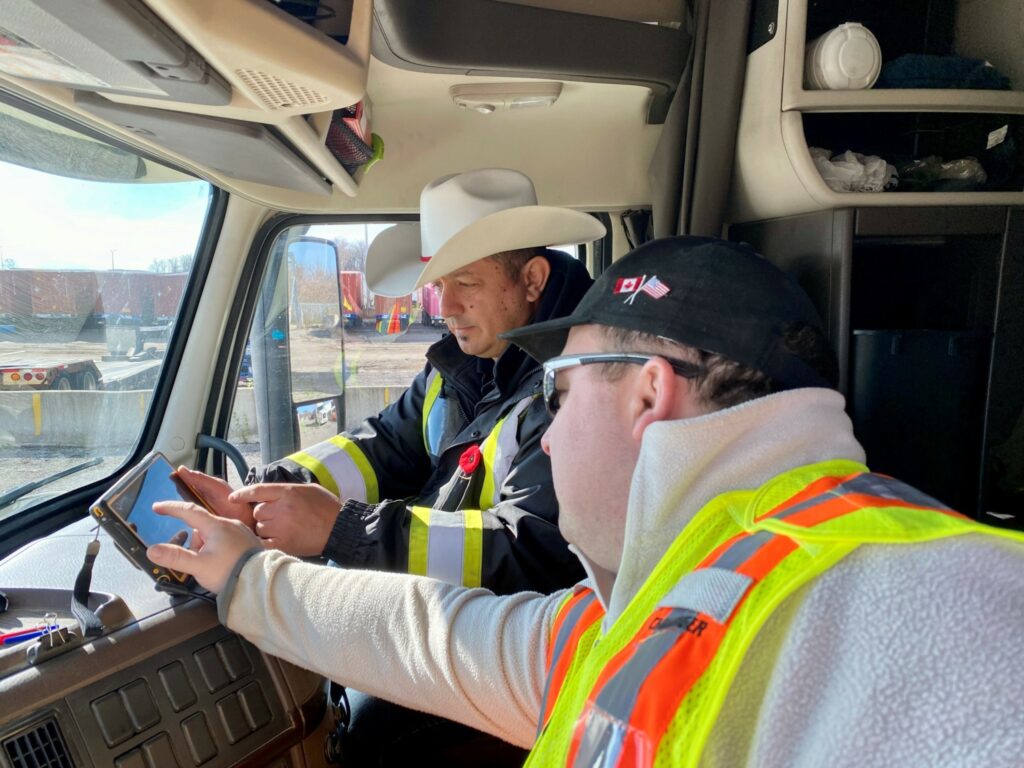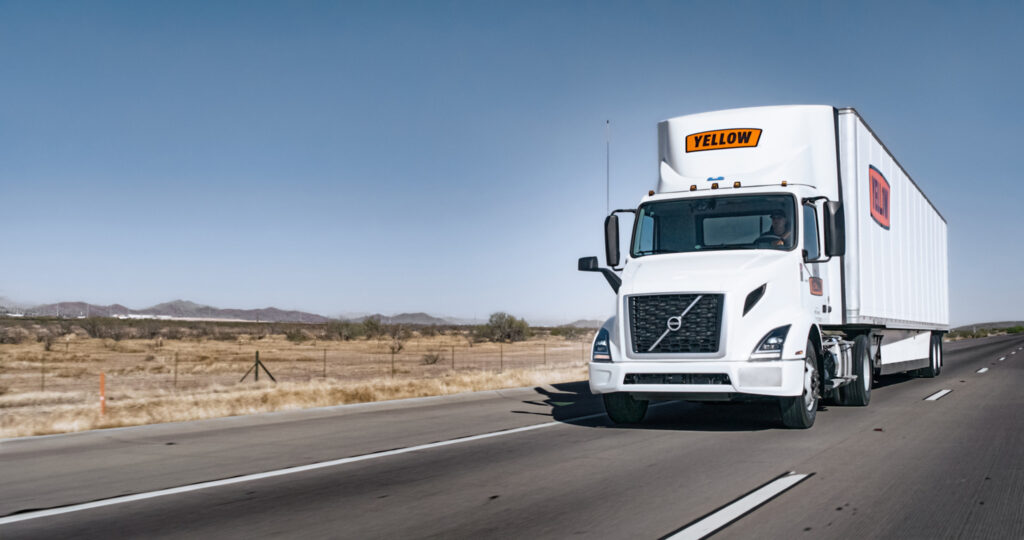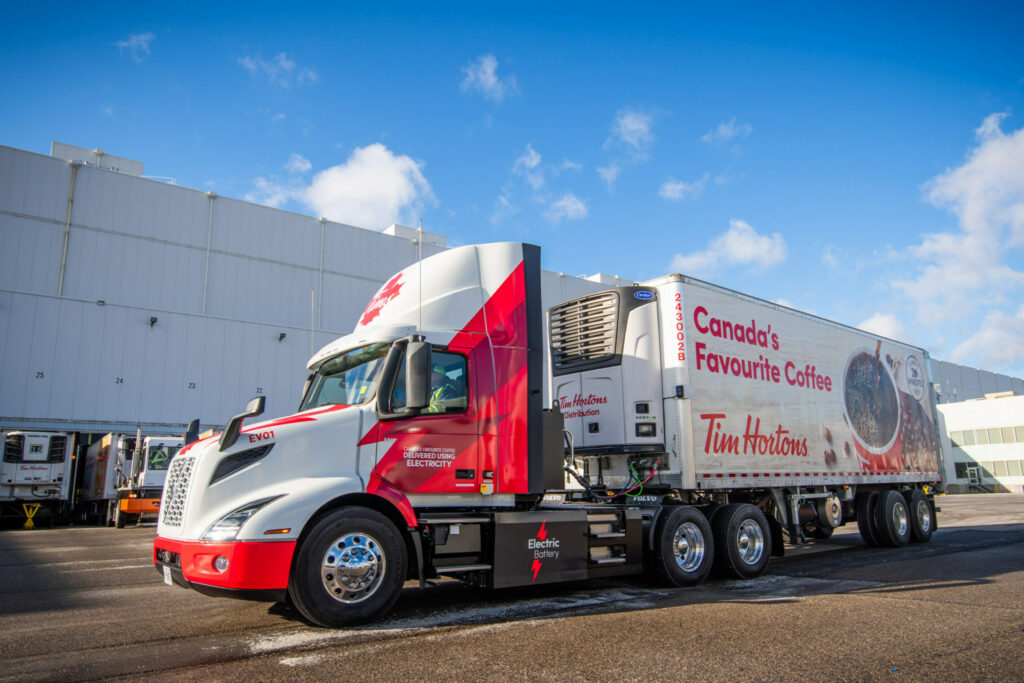The Top 10 Canadian trucking issues of 2023
It’s been a year. And for many, 2023 was one to forget. After record rate increases, driver wage increases and freight availability in 2022, this past year reminded us we work in a cyclical industry. But looking back on some of our top headlines of the past year and the themes that persisted through the year, there was also plenty to be excited about.
The adoption of new technologies, the deployment of zero-emission trucks, heighted driver training standards, and the arrival of AI also rose to the forefront as more upbeat themes from 2023. Here’s a look at the stories that dominated news coverage over the past year:
Freight recession
The trucking industry is inherently cyclical in nature, but has there ever been a cycle like this one? Just a year after truckers enjoyed unprecedented freight volumes and rates driven by the post-pandemic consumer spending boom, a perfect storm formed to remind us of the industry’s cyclicality.
Consumers began pulling back spending on goods in favor of experiences that don’t travel on truck (vacations, shows, etc.). A flood of new entrants into the business who sought to capitalize on the previous year’s strong spot market rates and volumes suddenly found themselves faced with little freight, low rates, overpriced equipment purchased at the peak, and rising diesel prices.
An overcapacity of trucking services defined the freight markets in 2023, which experts anticipate will stretch into the second half of 2024 despite record bankruptcies and exits from the segment.
Driver Inc.

The controversial misclassification of truck drivers as independent contractors under a scheme the Canadian Trucking Alliance (CTA) has dubbed Driver Inc., continued to be a divisive issue in 2023. In fact, the issue became even more widespread, with carriers in Quebec and the Atlantic provinces complaining for the first time that the practice has spread its tentacles into their regions.
In January, the Canada Truck Operators Association (CTOA) – comprised mostly of carriers from the South Asian trucking community – announced its presence with a gala dinner consisting of more than 200 carriers and 1,000 guests. It pushed back against the CTA’s anti-Driver Inc. campaign, claiming its own members have been targeted and that its legal interpretation suggests there’s nothing untoward about the classification of truck drivers as independent contactors.
Government at the federal and provincial levels remained wishy-washy, meeting with both groups and showing little commitment to enforce existing tax laws against carriers who employ drivers in this manner, thus ensuring it will continue to be an issue in the year to come.

ELD mandate takes effect…sorta
It should’ve been a non-issue as electronic logging device (ELD) requirements took hold in January, after years of planning and discourse on the subject. Most fleets had already made the transition in anticipation of the rules. But as the calendar turned to 2023, some jurisdictions seemingly got cold feet.
B.C. pushed back its mandate for provincially regulated carriers to Aug. 1 and Quebec to April 30. Some provinces, including Alberta, Saskatchewan, and most recently Nova Scotia, have not announced plans to require provincially regulated carriers to adopt ELDs.

Yellow bankruptcy
About 30,000 unionized truck drivers found themselves out of work in the summer of ’23 after the bankruptcy of U.S.-based LTL carrier Yellow Corp. Because of excess capacity in the market, there was little in the way of a related freight boon, as that freight was quickly absorbed by other players.
One of those players was TFI International’s TForce Freight, which also purchased two of the bankrupt carrier’s U.S. terminals. About 128 Canadian drivers and owner-operators were affected by the closure.

Municipal issues
In Caledon, Ont., police are investigating a November shooting that left two people dead and one injured at a property linked to an illegal truck parking operation. In January, the town successfully prosecuted two illegal trucking companies resulting in a court order to cease operations at two properties, including one mentioned above. There are scores of illegal truck yards of various sizes operating in the town.
And cities like Mission, B.C., and Cambridge, Ont., are rerouting trucks from their downtown cores as trucks juggle for space with four-wheelers and pedestrians. Windsor, Ont. has launched a truck route study to update the road network, which includes the busy cross-border Ambassador Bridge and Detroit Windsor Tunnel.
M&A deals continue
It may have felt like a quiet year for merger and acquisition (M&A) activity, but there were at least 20 transactions reported, mostly of the smaller, tuck-in variety. Perhaps the biggest strategic acquisition came when Titanium Transportation purchased Crane Transport, establishing a foothold in the U.S. asset-based trucking market.
Canada Cartage did likewise, with its purchase of GTI Group and its U.S. affiliates, indicating Canadian carriers aren’t shy about entering the U.S. market and indeed see it as an opportunity for future growth.
Higher standards for training
Mandatory entry-level training (MELT) standards continue to spread across the country, with the Atlantic provinces the latest to commit to strengthening training standards for commercial truck drivers.
While details on the recently announced Atlantic Canada plans remain fuzzy for now, Ontario Trucking Association (OTA) president Stephen Laskowski has said publicly on a couple of occasions that the association would like to see the formation of a provincially run Quebec-style training program for truck drivers and mechanics. We will see what comes of that in 2024.

EV adoption accelerates
Canadian fleets, particularly in B.C. and Quebec where generous provincial incentives exist on top of federal programs, have been quick to adopt electric trucks. The deployment of these trucks in harsh Canadian winter operating conditions will prove the readiness of the technology.
Both Volvo and Freightliner have sold Class 8 electric trucks into the Canadian market over the past year, while several refuse companies are collecting trash using the Mack LR Electric and smaller medium-duty EVs can be found in multiple applications across the country. The march toward the decarbonization of Canada’s trucking industry has begun, albeit with some measured steps from forward-thinking fleets with strong ESG (environmental, social and governance) commitments.

Cybersecurity and fraud
It was the year we became painfully aware that the trucking industry is a primary target for cyberattacks and fraud. A major ELD supplier was taken offline for weeks after a cyberattack that disabled its ELDs and fleet management platforms.
An Ontario-based hacker demonstrated to the industry its susceptibility to hacking when he disabled a tractor-trailer in front of a live audience at a conference. And freight fraud and double brokering were rampant as fraudsters sought to take advantage of carriers desperate for good paying loads.
Artificial intelligence
‘AI’ was possibly the buzzword of the year for 2023. But there’s more to it than buzz alone. We saw demonstrations of how AI can benefit the trucking industry, automating mundane, repetitive tasks and allowing employees to focus on more sophisticated problems. It can also bring predictability to fleet maintenance operations, notifying managers when parts may be susceptible to failure. And it can improve the reliability of technologies such as dash-cams, providing greater insights on driving behaviors to fleet managers.
Have your say
This is a moderated forum. Comments will no longer be published unless they are accompanied by a first and last name and a verifiable email address. (Today's Trucking will not publish or share the email address.) Profane language and content deemed to be libelous, racist, or threatening in nature will not be published under any circumstances.
-
I agree 100 percent with you
I volunteer with disabled people many were hurt in traffic crashes including myself
I help find agr business and farms and construction companies drivers that have got their P R to become company drivers on payroll or lease ops
Only 4 out of 10 even after driving 3 years in Canada can drive at a skill level up to what is needed to safe in the winter that come from certain parts of the world
Many of these drivers that we turn down need to get at least 200 hours of training with a experienced driver trainer in the passenger seat and at least some time on a driver simulation machine. We need to have tiered wage like nurses and pay hourly with overtime. Most of the drivers that come to work as lease ops have been brought in as cheaper drivers often as foreign students and never driven or owned a car before coming to Canada .
What! No imaginary driver shortage?
Hi James-been following your editorials since you resided in Alberta and would appreciate some form of honesty regarding Commercial accidents, as majority are unskilled people from India, Humbolt of course was the prime example. My opinion based on 60 years in the industry-fleet management-commercial accident invetigatieon-driver training etc. The next accident could possibly be a relative of yours or mine and the government is still playing politics in regards to a “serious driver training program” like other trades. The Professional driver has disappeared since the mid 1980’s and commercial accidents are a daily occurance. Look forward hearing from you. Thankyou